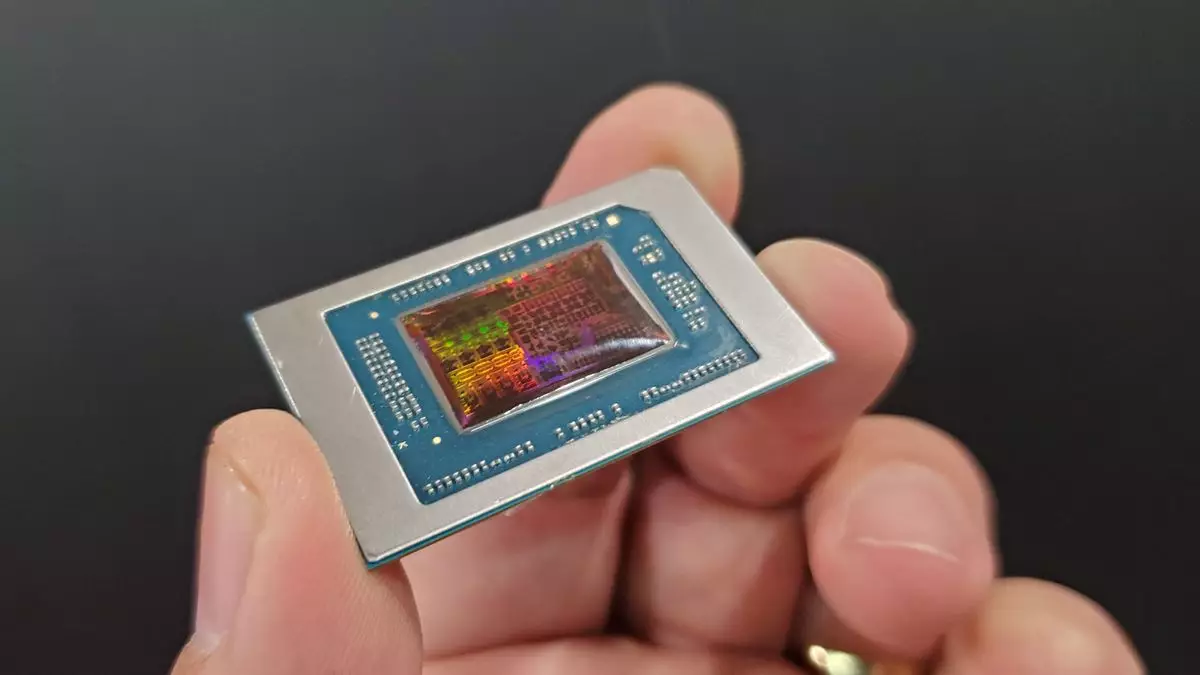AMD has been a trailblazer in the semiconductor industry, consistently pushing the envelope with innovation and performance. The new Strix Point APU stands as a testament to this commitment, particularly in its application in laptops and handheld devices like the Razer Blade 16 and the OneXPlayer OneXFly F1 Pro. These devices have already showcased the immense capabilities of the Strix Point, which integrates advanced technology for a seamless user experience. However, the real excitement lies in AMD’s plan to bring this powerful chip to the desktop environment, promising an era of compact yet capable computing solutions.
Speculating on Desktop Integration
AMD’s projected rollout of a desktop version of the Strix Point, rumored to be branded as the Ryzen 9000G, raises a plethora of intriguing questions about the desktop landscape. New leaks indicate the potential integration of an “AI” component into the brand name, which could foreshadow significant advancements in processing capabilities tailored for artificial intelligence applications. This rebranding effort isn’t just a marketing gimmick; it’s a nod to the increasing importance of AI processing within consumer electronics. Moreover, AMD’s strategy to maintain the same silicon architecture across both mobile and desktop platforms illustrates its commitment to fostering a cohesive ecosystem.
The Thrilling Specifications
At the heart of the Strix Point APU are its remarkable specifications. With 12 Zen 5 CPU cores, a combination of four robust Zen 5 cores alongside eight Zen 5c cores, it offers an incredible balance of performance and efficiency. The graphical prowess is just as impressive, featuring 16 RDNA 3.5 graphics compute units—making it ideal for light gaming and multimedia tasks. Furthermore, the anticipated inclusion of an NPU rated at 55 TOPS means that this chip is poised to handle AI workloads effectively, enhancing overall user experience with smarter processing capabilities.
What’s particularly fascinating is that the Strix Point is expected to utilize the AM5 socket. This compatibility with a wide range of existing AMD motherboards not only eases the transition for users upgrading to the new chip but also ensures significant versatility for custom builds and mini PCs aimed at consumers seeking compact solutions.
Performance Expectations vs. Reality
In theory, one might anticipate that the desktop variant of the Strix Point could achieve higher clock speeds compared to its mobile counterparts. However, while the notion of pairing this APU with a discrete GPU exists, it’s paramount to recognize that for raw gaming performance, dedicated high-end CPU and GPU combinations will always take the crown. Herein lies an intriguing facet of the Strix Point—rather than targeting hardcore gaming enthusiasts, it appeals to a demographic craving a strong all-rounder performance in a petite form factor.
For instance, the Ayaneo Retro Mini PC AM01S integrating Strix Point aligns perfectly with this vision. It emphasizes efficiency and utility over sheer power, allowing consumers to enjoy robust computing experiences without the intimidating footprint of traditional desktop systems.
Cost-Effectiveness in Focus
While the mobile variants of processors often carry a premium, the prospective desktop Strix Point could offer a more cost-effective alternative. This aspect is crucial, especially in today’s economic climate where consumers are increasingly conscious of their spending. The potential for better pricing combined with impressive specifications is a clear win for both AMD and users looking for budget-friendly mini PC solutions.
Despite the uncertainty surrounding the exact launch timeline and pricing details, the anticipation surrounding AMD’s Strix Point APU is palpable. As the countdown to Q4 2025 begins, enthusiasts and tech aficionados alike should keep their eyes peeled for updates. The transition to desktop formats could signify more than just a new chip release—it could redefine how we perceive compact computing power, paving the way for innovative applications in various industries.
With ambitious plans and a clear focus on expanding its portfolio, AMD continues to captivate the tech world and set a benchmark for what future computing can achieve.


Leave a Reply